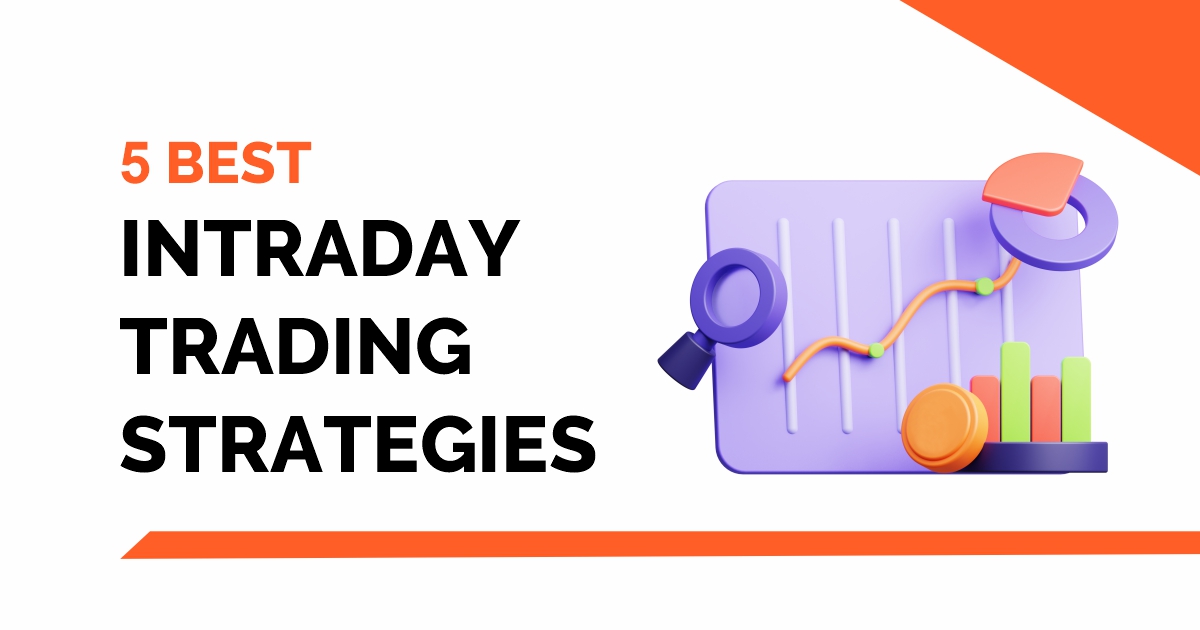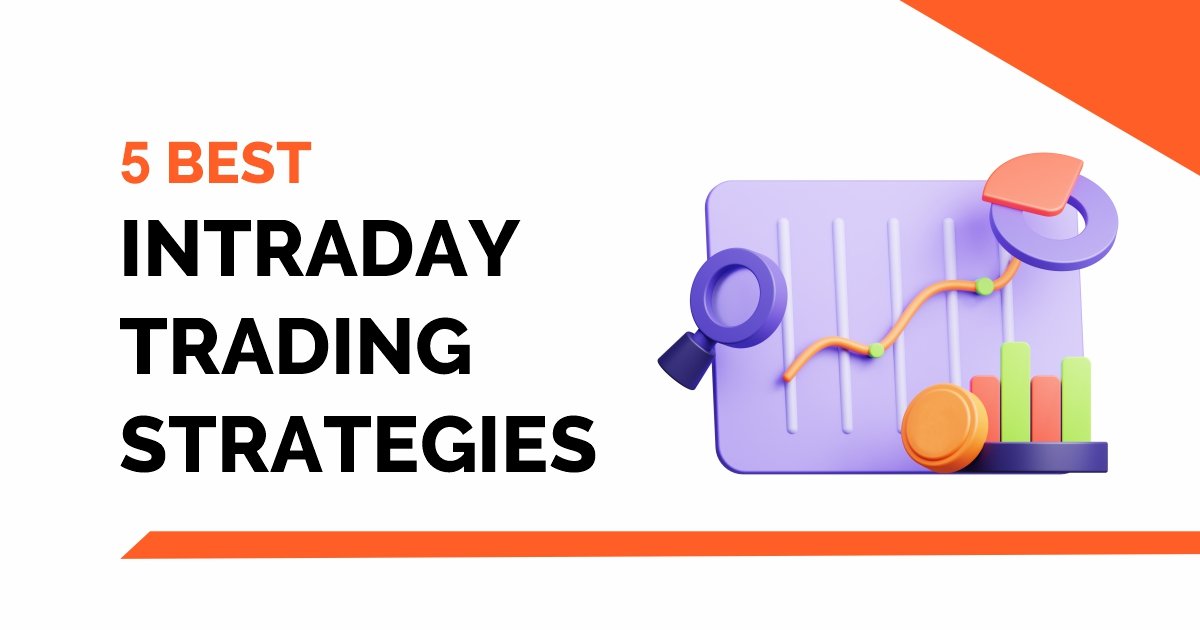Discover the secret to successful day trading with these groundbreaking intraday moving average strategies – your key to trading success! 📈
 Image courtesy of via DALL-E 3
Image courtesy of via DALL-E 3
Table of Contents
Introduction to Moving Averages and Intraday Trading
We will start by explaining what a moving average is and how it is used in the world of intraday trading, which is a style of trading where buys and sells happen within the same day.
What is a Moving Average?
This part will describe the moving average as a tool that helps us see the average price of a stock over a certain period.
What is Intraday Trading?
Here, we’ll explain intraday trading as a fast-paced activity where traders buy and sell stocks within the same day.
The Best Moving Averages for Intraday Trading
In intraday trading, there are two main types of moving averages that traders often use: simple moving averages (SMA) and exponential moving averages (EMA). These moving averages help traders see the average price of a stock over a specific period, making it easier to spot trends.
Choosing the Best Moving Average
When it comes to intraday trading, picking the right moving average is crucial. Traders need to consider the speed at which they want to make trades and the level of noise in the market. For quick trades that happen within the same day, a shorter-term moving average may be more suitable. On the other hand, if traders are looking for more stable trends, a longer-term moving average could be the better choice.
Understanding MA Crossover in Intraday Trading
When it comes to intraday trading, one of the key strategies that traders often use is the MA crossover. But what exactly is MA crossover, and how can it help you make better decisions in the fast-paced world of intraday trading? Let’s break it down in simple terms.

Image courtesy of via Google Images
What is MA Crossover?
MA crossover stands for Moving Average Crossover. It’s a point on a stock chart where two different moving averages intersect or cross each other. Moving averages are calculated based on the average price of a stock over a specific period, and when two different moving averages cross, it can signal a potential shift in the stock’s price direction.
Using MA Crossover in Intraday Strategies
For intraday traders, MA crossovers can be valuable signals for making buy or sell decisions. When a shorter-term moving average crosses above a longer-term moving average, it’s often seen as a bullish signal, indicating a potential uptrend. Conversely, when the shorter-term moving average crosses below the longer-term moving average, it may suggest a bearish signal, signaling a possible downtrend.
Traders can use these crossover points to confirm trends, identify potential entry or exit points, and manage risk in their intraday trading activities. By paying attention to MA crossovers and combining them with other indicators, traders can enhance their decision-making process and improve their chances of success in the market.
Trading Indicators Alongside Moving Averages
In intraday trading, it’s essential to have all the right tools at your disposal to make informed decisions quickly. While moving averages are great for indicating trends, combining them with other trading indicators can provide even more valuable insights.
Types of Trading Indicators
There are various trading indicators that traders use alongside moving averages to enhance their analysis. Some common ones include Relative Strength Index (RSI), Moving Average Convergence Divergence (MACD), and Bollinger Bands. Each of these indicators offers unique information that can help traders make better decisions.
Combining Indicators with Moving Averages
By combining different indicators with moving averages, traders can create a more comprehensive trading strategy. For example, if a moving average crossover is supported by a signal from the RSI indicating overbought conditions, it can strengthen the decision to sell a stock. These combinations of indicators can provide more robust signals for both buying and selling opportunities in intraday trading.
Putting It All Together: Intraday Trading with Moving Averages
Imagine you are an intraday trader. You wake up early in the morning, excited to start your day of buying and selling stocks. You open your computer and look at the stock charts. You see the moving averages, which show you the average price of a stock over a period of time. These moving averages help you decide when to buy or sell a stock during the day.
 Image courtesy of via Google Images
Image courtesy of via Google Images
Tips and Tricks for Young Traders
If you’re just starting out as a young trader, here are some simple tips to keep in mind:
1. Start small: Begin with a small amount of money to trade until you get the hang of it.
2. Learn from mistakes: Don’t be discouraged by losses. Use them as learning opportunities to improve your trading skills.
3. Stay informed: Keep up with the latest news and trends in the stock market to make informed decisions.
4. Practice patience: Intraday trading can be fast-paced, but it’s essential to stay calm and patient when making decisions.
5. Have fun: Trading can be exciting and rewarding. Enjoy the process and learn from every trade you make.
Conclusion
As we come to the end of our exploration into moving averages and intraday trading, it’s essential to recap the key points we’ve covered. We’ve learned how moving averages help us understand the average price of a stock over a specific period, and how intraday trading involves quick buys and sells within the same day.
By delving into the best moving averages for intraday trading, we’ve discovered the importance of choosing the right type of moving average for swift trading decisions. Simple and exponential moving averages play a crucial role in guiding traders towards profitable strategies.
Understanding the MA crossover strategy has shown us how the intersection of two moving averages can signal opportune moments to buy or sell during intraday trading sessions. This technique provides valuable insights for making informed decisions in a fast-paced trading environment.
Furthermore, we’ve explored how combining trading indicators with moving averages can enhance the accuracy of trading signals, leading to more successful trades. By utilizing a variety of indicators alongside moving averages, traders can gain a comprehensive view of market trends and make strategic decisions.
In our journey towards mastering intraday trading with moving averages, we’ve highlighted the significance of using these tools effectively to make smart trading choices. By incorporating the tips and tricks shared in this guide, young traders can develop a solid foundation for navigating the dynamic world of intraday trading.
Frequently Asked Questions (FAQs)
What is the simplest moving average to understand for beginners?
For beginners, the simplest moving average to understand is the simple moving average (SMA). The SMA calculates the average price of a stock over a specific period by adding up the closing prices of the stock for that period and dividing it by the number of days in that period. It provides a clear and easy-to-follow indication of the stock’s price trend over time.
How quickly do I need to make decisions in intraday trading?
Intraday trading is a fast-paced style of trading where buys and sells of stocks happen within the same day. This means that traders need to make quick decisions based on rapid changes in stock prices. It is essential to stay alert, keep an eye on market trends, and be ready to act swiftly to capitalize on short-term price movements.
Can I use moving averages for trading other things besides stocks?
Yes, moving averages can be used for trading various assets besides stocks. They are versatile tools that can be applied to trading currencies, commodities, cryptocurrencies, and other financial instruments. The principles of using moving averages to analyze price trends and make trading decisions can be adapted to different markets and assets.

